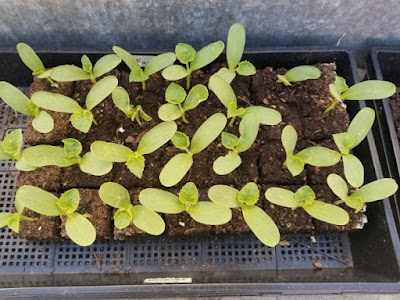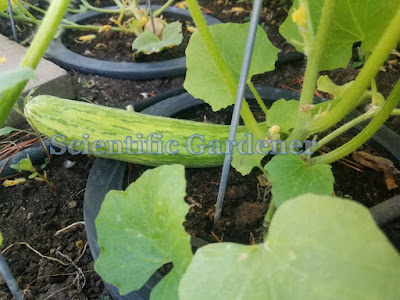At the same time as I was planning out my Mezzo Lungo carosello trial, I was looking for a replacement for 4-inch soil blocks. Having sold off my 4 inch cubic soil blocker in 2020, I worked off and on throughout the winter to find a comparable replacement for the need to “pot up” 2 inch soil blocks. The issue is that if the plot where the 2” soil blocks are supposed to be planted is not ready, then the roots will struggle to continue to grow. Past experience taught me that this only results in stressed plants that will only experience pests and disease as a result. To avoid this problem, I needed a 4” solution. I looked at net cups, hydroponic baskets and square Vanda orchid baskets – but all of these solutions usually ended up not being large enough, not being the right shape to fit in a 10x20 seedling tray or being much too expensive to be practical.
Eventually, I ended up finding strawberry baskets. These would allow the soil to be mostly contained and the roots to grow through the gaps. After purchasing and returning old cheap baskets from Amazon that were the wrong size, I purchased s dozen nearly 4” square green plastic strawberry till baskets from Glacier Valley Enterprises – just to try out. While shipping for the initial product was expensive and the shipping for the actual product was worse, the baskets worked wonderfully. Though I was not necessarily wanting to use the baskets for all my planting, I realized that to get a head-start on my spring garden, I needed to have the baskets ready to go.
Good thing I had those baskets ready, because they really saved the day when the plot for my 2” seedlings was not ready to go. I was able to transplant my cucumber seedlings into the 4” strawberry baskets and the plants were able to grow until to full maturity – when I had to remove each plant and its plastic basket.
So here are the pros and cons of utilizing Strawberry Baskets for transplanting seedlings with sensitive roots:
Pros:
-These containers buy the gardener 2-4 weeks more time for the garden bed to be ready
-It is quick and easy to put soil into the container and pot-up the 2” soil block
-Easy to transplant the 4 inch container into the ground
-The container is reusable and is easy to wash using a dish-scrubbing brush
Cons:
-You have to go back and find the plastic container. This can be a bit of a chore – especially if the plant died prematurely or if transplanting in clay soils.
-There is a possibility of leaving some of the plastic in the ground
-Sometimes the container can be damaged and need to be thrown away.
-The containers are probably not UV resistant, meaning that they do not hold up well to sun damage.
-While the containers are reusable, they still need to be washed




























































































































































